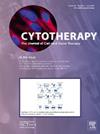Particulates in CGT guidance survey results – an ISCT process development & manufacturing committee perspective on cell and gene therapy industry knowledge awareness
IF 3.7
3区 医学
Q2 BIOTECHNOLOGY & APPLIED MICROBIOLOGY
引用次数: 0
Abstract
The International Society for Cell & Gene Therapy Particulates Working Group has surveyed the global industry on commonly used regulatory guidance documents pertaining to particulates across various cell and gene therapy (CGT) product-based chemistry and manufacturing controls. Responses were collated from academic and industrially based individuals involved in or making decisions for manufacturing, quality control and analytics. Two surveys covering therapy developers and manufacturing suppliers were created and distributed via e-mail, through focus groups and via social media platforms. In total, 97 responses were received from CGT professionals at different career levels, which varied from technicians to corporate executives. The responses represent a snapshot of the different CGT industries, with a bias in cell therapy developers, because of the distribution of respondents. Overall, we observed a widespread use of common guidance and legislative documents with specific testing requirements pinned to certain CGT product types. Cell-based combination drugs and devices are not well addressed and may require other guidance that was not referenced. These results indicate that CGT particulate risk management should be clarified by collating various particulate guidelines into an easy-to-use guide that brings awareness to the various legislative and guidance documents pertaining to new and novel therapies, their classification, their route of administration and the regulatory jurisdiction under which they are handled. The group also recommends clearly outlining the differences and similarities in particulate management regulations across the globe. As the CGT industry is undergoing maturation, the risk analysis methods are also maturing. With such a broad range in product types, routes of administration, source materials and processing methods, standards of risk analysis and control need to be specific to the risk profile associated with any given drug product. The manufacturing strategy of novel drug types represented under the advanced therapy umbrella will require careful interpretation and implementation of the existing guidance identified in this survey, as not one guidance covers all manufacturing challenges with particulates.
CGT 指南中的微粒调查结果--ISCT 工艺开发和制造委员会对细胞和基因治疗行业知识认知的透视。
国际细胞和基因治疗协会微粒工作组调查了全球行业常用的关于各种细胞和基因治疗(CGT)产品化学和制造控制中微粒的监管指导文件。我们整理了来自学术界和工业界参与制造、质量控制和分析决策的个人的回复。研究人员通过电子邮件、焦点小组和社交媒体平台创建了两份调查,调查对象包括治疗开发商和制造供应商。总共收到97份来自不同职业级别的CGT专业人员的回复,从技术人员到公司高管。这些回应代表了不同CGT行业的一个快照,由于受访者的分布,对细胞疗法开发商有偏见。总的来说,我们观察到通用指南和立法文件的广泛使用,其中包含特定CGT产品类型的特定测试要求。基于细胞的联合药物和器械没有很好地解决,可能需要其他未参考的指导。这些结果表明,CGT颗粒风险管理应该通过将各种颗粒指南整理成一个易于使用的指南来澄清,该指南使人们了解与新疗法有关的各种立法和指导文件,它们的分类,它们的管理途径以及处理它们的监管管辖权。该组织还建议明确概述全球颗粒物管理法规的异同。随着CGT行业的日趋成熟,风险分析方法也日趋成熟。由于产品类型、给药途径、来源材料和加工方法的范围如此广泛,风险分析和控制标准需要具体到与任何给定药品相关的风险概况。先进治疗类新药的生产策略需要仔细解释和实施本调查中确定的现有指南,因为没有一个指南涵盖了所有与颗粒有关的生产挑战。
本文章由计算机程序翻译,如有差异,请以英文原文为准。
求助全文
约1分钟内获得全文
求助全文
来源期刊

Cytotherapy
医学-生物工程与应用微生物
CiteScore
6.30
自引率
4.40%
发文量
683
审稿时长
49 days
期刊介绍:
The journal brings readers the latest developments in the fast moving field of cellular therapy in man. This includes cell therapy for cancer, immune disorders, inherited diseases, tissue repair and regenerative medicine. The journal covers the science, translational development and treatment with variety of cell types including hematopoietic stem cells, immune cells (dendritic cells, NK, cells, T cells, antigen presenting cells) mesenchymal stromal cells, adipose cells, nerve, muscle, vascular and endothelial cells, and induced pluripotential stem cells. We also welcome manuscripts on subcellular derivatives such as exosomes. A specific focus is on translational research that brings cell therapy to the clinic. Cytotherapy publishes original papers, reviews, position papers editorials, commentaries and letters to the editor. We welcome "Protocols in Cytotherapy" bringing standard operating procedure for production specific cell types for clinical use within the reach of the readership.
 求助内容:
求助内容: 应助结果提醒方式:
应助结果提醒方式:


